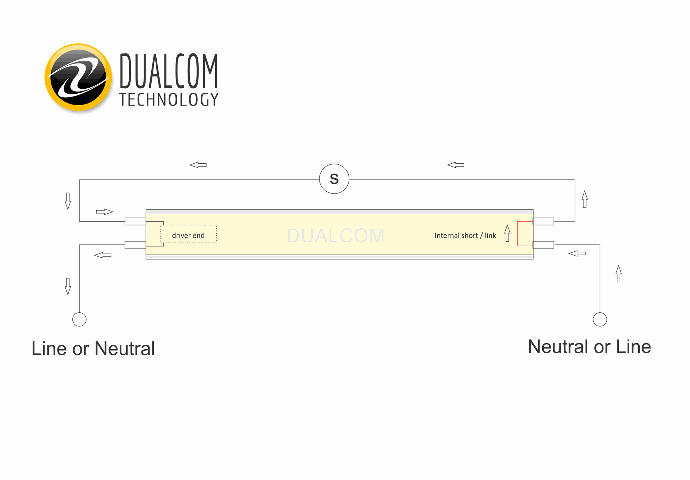LED tube lights are generally composed of an aluminum alloy heat sink, internal driver and frosted or lined PC cover to protect the internal LED Chips and electronics. The internal driver "drives" the LED PCB board using a Constant Current output and creates a linear, flicker free light with almost zero UV. Traditional fluorescent tubes by comparison are filled with a gas containing mercury vapor and argon, xenon, neon or krypton. An electric current in the gas excites mercury vapor which produces short-wave ultraviolet light, that then causes a phosphor coating on the inside of the lamp to glow. A Ballast inside the lamp fixture is then used to regulate the current through the lamp.
Life expectancy of a typical fluorescent lamp is about 9000 hours - Sounds a lot but they will suffer a huge amount of light loss and efficiency over that period, if you have ever replaced a fluorescent tube after 8 months of operation you will see a huge difference in light output from old and new, this is why the maintenance cost is so high especially when health and safety is a factor. LED can have a life expectancy beyond 100,000+ hours! Because of this, a lumen life measurement is used in reporting. The IES LM-80-08 is used for measuring lumen maintenance of LED light sources, while the projection of lumen maintenance beyond the duration available in the LM-80 report is found in the IES TM-21-11 report projecting long term lumen maintenance of LED light sources. Basically if the reports show the light output to drop or diminishes to 70% of the original lumen rating, we are then able to give an optimal life expectancy. You would be very surprised what the life span of a traditional fluorescent tube was if this rule was ever applied.
Traditional T5, T8 and T10 fluorescent tubes work with either a magnetic ballast or electronic ballast. As a quick reference to your existing installation, Magnetic ballasts will have an external removable starter - a small cylinder shape with two lugs for twisting into a socket. Electronic ballasts do not have any external starter; it is all controlled within the ballast. If you are looking to upgrade from Fluorescent tubes to LED tubes, the magnetic ballast type is the simple option change over, and Electronic type require a bypass.
It should be easy to make a decision to move from traditional fluorescent tube lighting to LED technology. The question is how easy it is to upgrade your existing fixtures? As mentioned above Magnetic ballasts have an external starter that are easy to upgrade – it is simple as removing the existing “starter” replace with a "starter housing" that contains an HRC fuse inside (we supply one with every tube), add a label to warn it is now configured for LED tubes and you're done. If the fixture has an Electronic ballast this involves the removal or bypass of the electronic ballast completely. This type of retro fit requires an electrician to remove or bypass and certify it is safe to install an LED tube. In these cases replacing the entire fitting with a dedicated LED Batten Light is usually the best and cheapest option.
As part of the AS/NZS standards, the wiring inside the tube is configured to be single end cap energized with a short at the other, so when one end is retrofitted into a tube holder, the other end is not live and can be installed / will work either direction. Below is a circuit diagram showing how a tube is to be connected / wired the correct way. Wiring this way means the tube can be installed in either direction and work both ways. LED T8 Tubes should never be powered from just one end, because if the tube was ever installed the wrong direction later on it would cause a direct short circuit across Line and Neutral - which is very dangerous.
LED Tube Wiring
Below is the correct wiring format for approved LED tube lights. Energized end cap one side and direct internal short the other. This method allows the tube to be installed either direction. It is not recommended to power an LED Tube from just one end due to safety.
